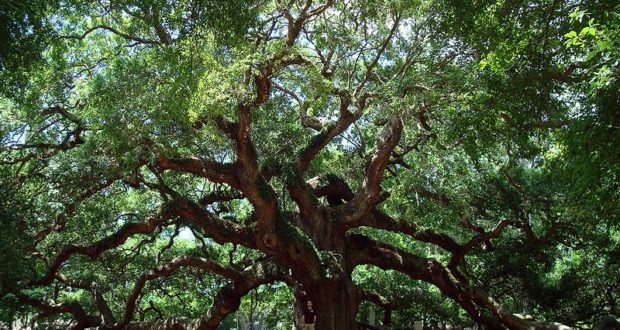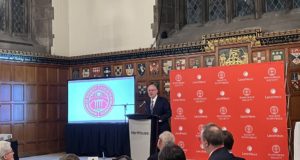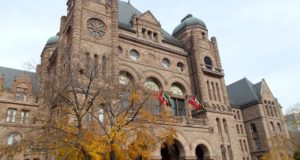One of the first things law students are taught is that our Constitution is a “living tree.” The Supreme Court has said that the living tree doctrine, which holds that our Constitution must be capable of evolving to meet new social realities, is “one of the most fundamental principles of Canadian constitutional interpretation” (See Reference Re Same Sex Marriage, at para 22). And, yet, there are some early indications that the Supreme Court has tired of the metaphor, and perhaps of the doctrine itself.
It may be surprising to learn that, in the last decade, the Supreme Court has only referenced the living tree metaphor in a single majority opinion. It did so in the 2011 Securities Act Reference (see para. 56), and then only in passing. Indeed, the Court has not uttered the words “living tree” in either a majority, concurring or dissenting opinion for over five years. That is truly unprecedented in the post-Charter era.
To be sure, references to the living tree were never ubiquitous in Supreme Court opinions. A few years could sometimes pass without one or more of the justices invoking the metaphor. But, in any given five-year period, the “living tree” would appear at least twice, usually 3 or 4 times, and, in several instances, 5 times or more.
In this brief article, I examine this phenomenon in greater detail. I offer a hypothesis to explain the decline in living tree references, namely that it may be owing to the inherently constraining nature of the living tree doctrine, which would not support the more radical constitutional changes that have taken place over the last few years. While this area requires further study and analysis, I suggest that the Supreme Court may have moved beyond the living tree doctrine.
Reference to the Living Tree in Supreme Court Decisions
As many know, the “living tree” metaphor dates back to the famous “Persons Case” of 1929 (Edwards v. Attorney General), in which Lord Sankey of the Judicial Committee of the Privy Council stated that “The British North America Act planted in Canada a living tree capable of growth and expansion within its natural limits.” As then Professor Bradley Miller (now a justice of the Court of Appeal) persuasively argued in a 2011 paper, Lord Sankey’s use of the metaphor in the Persons Case bears little or no resemblance to the modern living tree doctrine, and the Privy Council’s reasoning in that case was actually in keeping with original-meaning textualism. I have noted elsewhere that Canadian courts barely cited Lord Sankey’s metaphor in the subsequent five decades, and the decision eventually fell into obscurity. What we now call the living tree doctrine did not actually come into being until, at the very earliest, 1979 in the decision of Blaikie v Quebec.[1]
From 1979-1988, the Supreme Court invoked the living tree doctrine a total of 7 times. Most of these cases, however, cited the metaphor for the uncontroversial proposition that constitutional provisions should be read broadly and not technically. This was arguably the original understanding and application of the living tree metaphor – that the Constitution should be granted a “large and liberal” construction (see Persons at para 45). A broad interpretation should not be conflated with an evolving or “progressive” one; it may, in fact, be perfectly consistent with the term’s original meaning and even its original intended application (for example, the original meaning of a term such as “freedom of expression” is arguably broad, and the framers may very well have intended for it to be applied broadly and to new phenomena). It is questionable whether Lord Sankey was actually connecting the “living tree” metaphor to a “large and liberal” construction or whether these were separate thoughts,[2] but it is clear that, within a couple of years, the two concepts had been interwoven together.[3]
Thus, it appears that most of the “living tree” decisions of the 1979-1988 period cited the metaphor for its older “large and liberal” meaning. Only a couple of the decisions – namely BC v Ellett Estate and the BC Motor Vehicle Act Reference – can be said to have endorsed the new living tree doctrine of evolving constitutional interpretation. And, as we shall see below, in the case of the BC Motor Vehicle Reference, at least, the scope of the evolution the Court endorsed was not necessarily inconsistent with modern conceptions of originalism.
From 1989-1998, the Court cited the living tree metaphor 9 times. The meaning of the doctrine became far more uniform (an evolving interpretation, not merely a broad one), but the metaphor was also used to illustrate the “natural limits” of constitutional evolution. The past was said to play a “critical but non-exclusive role” in determining the content of Charter rights. The “living tree” was thus a theory with “limits” and could not be used “to transform a document completely or to add a provision which was specifically rejected.”[4]
The living tree metaphor continued to be cited with approximately the same frequency (10 times in 8 separate decisions) between 1999-2008. The Court became more unqualified in its endorsement of evolving constitutional meaning – most notably Gosselin v. Quebec, in which both the majority and dissent advanced a seemingly boundless understanding of the living tree’s potential for growth. At the same time, however, the Court did not entirely lose sight of the second half of the metaphor – the “natural limits” to constitutional growth. In R. v. Blais, a unanimous panel stated that “this Court is not free to invent new obligations foreign to the original purpose of the provision at issue. The analysis must be anchored in the historical context of the provision” (see para 40). Similarly, in Canada v. Hislop, while the majority invoked the living tree metaphor for the proposition that the Constitution must be capable of developing, Bastarache J., in dissent, cautioned against extending the principle too far. “There is a difference” he noted, “between changes in constitutional interpretation and actual constitutional change” (See para 144).
In the last decade, the living tree metaphor has only been cited 3 times. As noted above, only one of these occurred in the context of a majority decision – the Securities Act Reference. The metaphor and the doctrine itself played no role in the Court’s decision, which was arguably based upon an originalist interpretation of the federal Trade and Commerce Power.[5]
The “living tree” metaphor last appeared in a Supreme Court decision in 2012. In their concurring opinion in R. v. N.S., Justices Rothstein and LeBel reiterated the natural limits of constitutional development. They noted that “the Charter is grounded in a long history and tradition. The ‘living tree’ keeps growing, but always from its roots.”
Explaining the Absence of the Living Tree
What explains this sudden decline in references to the “living tree” over the last decade? One explanation – and perhaps the one most in keeping with Occam’s razor – is that this is all simply a coincidence. There is no evidence that this trend is statistically significant. The Court did not mention the “living tree” for four years between 1998 and 2002, but then referenced it 6 times over the next four years. Who knows, in other words, what may be around the corner?
I would be inclined toward this explanation if it were not for the fact that, in the last decade, and especially over the last 5 years, we have seen some of the most non-originalist decisions in the history of the Supreme Court. These cases have mostly dealt with individual rights, the area in which the living tree doctrine is most closely associated. Why, then, did the Court not even cite the living tree in Bedford and Carter when it overturned its own precedents from just two decades earlier? Why was there no mention of this doctrine in Saskatchewan Federation of Labour when the majority established a new right to strike? Where was this “fundamental principle of Canadian constitutional interpretation” in Trial Lawyers Association of British Columbia when the Court held that s. 96 of the Constitution Act, 1867 now protects an individual right of access to justice?
One possible theory – and it is very much a theory at this point – is that the Court has done exactly what it cautioned against in BC v Canada, embracing “something more than a living tree approach.” During the 1980s and 1990s the Court regularly invoked the “living tree” metaphor, but it usually did so against a background of historical purposes and “natural limits.” The past did not play an exclusive role, as discussed above, but it did play a “critical” one. The living tree, in other words, was not meant to be a platitude that could be used as carte blanche to reach the desired result; rather, it was meant to be a true interpretive doctrine.
In its more recent decisions, however, the Court has appeared far less concerned with text, purpose and settled doctrine. Contrast the Court’s admonition in Blais that “this Court is not free to invent new obligations foreign to the original purpose of the provision at issue” with Justice Abella’s pronouncement in Saskatchewan Federation of Labour that the time had come to give the right to strike “constitutional benediction.” The former suggests inherent institutional constraints and a method of constitutional interpretation that must be based, to some extent, on the original purpose of the provision. The latter imagines the judge as a sort of priest charged with bestowing blessings upon worthy rights.
Lest I be accused of cherry-picking quotations, let us have regard to the record. Of the older “living tree” decisions (and specifically, where a majority of the Court adopted the metaphor to justify a progressive interpretation of the Constitution), there are very few where the Court’s reasoning is truly irreconcilable with the text and historical purpose. Professor Sirota and Benjamin Oliphant have argued in their article, “Has the Supreme Court of Canada Rejected ‘Originalism’?”, that decisions such as the BC Motor Vehicles Reference, the Same-Sex Marriage Reference and the Employment Insurance Reference, are consistent with modern notions of originalism (though not with original intended applications). I am not entirely sure I agree with them, but I will meet them at least halfway and agree that each of these decisions affords due consideration to text, context and historical purpose. To the extent any is non-originalist, it is not egregiously so.
Conversely, the more recent Charter cases say very little about text and purpose. One could certainly argue that BC Motor Vehicles is consistent with the Constitution’s original meaning – and Professor Sirota and Mr. Oliphant do this ably – but one could not plausibly make the same argument about Bedford or Saskatchewan Federation of Labour. As I have previously argued (here with respect to Bedford and here with respect to Saskatchewan Federation of Labour), those decisions expressly departed from settled precedent and relied upon an expansive interpretation completely at odds with the constitutional text and original purpose. To paraphrase Justice Bastarache, they represent not merely a change of constitutional interpretation, but actual constitutional change.
Admittedly, there are a number of decisions in the last few years where the Court has affirmed an originalist – or at least a textualist – approach to constitutional interpretation (see Sirota and Oliphant’s companion paper, “Originalist Reasoning in Canadian Constitutional Jurisprudence”). However, this method has been confined to the structural/institutional realm (for example, the Senate Reference and the Nadon Reference) and historical bargain cases (for example, Caron v. Alberta). In the context of individual rights, the Supreme Court has shown little if any regard for the Constitution’s original meaning and purpose.
Conclusion: A Post-Living Tree Supreme Court?
In sum, I am theorizing that the decline in references to the living tree may be explained by the corresponding rise in recent years of more radically non-originalist and non-doctrinal decisions where individual rights are concerned. The living tree doctrine allows for “growth” but only within the “natural limits” of the Constitution. If applied properly, it forces judges to contend with what those natural limits are, and helps to ensure that the Constitution’s evolution remains rooted in its text and original purpose.
To be clear, I am not advocating that the Supreme Court reaffirm the living tree doctrine. While it is certainly capable of being utilized in a principled and constrained fashion, it is also liable to be applied inconsistently or too expansively (as Gosselin demonstrates). In my view, a traditional textualist methodology (complete with the original meaning canon) and a generous approach to constitutional language is a much more effective tool in reducing legal indeterminacy while remaining adaptable to modern circumstances. But it must be conceded that a living tree doctrine is still preferable to no doctrine at all.
By the same token, I want to emphasize that I am not arguing that the Supreme Court has definitively abandoned the living tree doctrine. I make no claim to the statistical significance of this recent trend. My aim here is to illuminate a phenomenon that is, at the very least, odd, and to offer a preliminary hypothesis.
Moreover, to the extent the Supreme Court has moved beyond the living tree, I am not arguing it has done consciously. I doubt very much that any of the Supreme Court justices has made a deliberate decision to refrain from invoking the living tree metaphor. On the other hand, it does seem to be the case that the Court is generally less concerned with maintaining settled doctrine, and this is especially true in the area of public law, an issue that Justice Stratas of the Federal Court of Appeal lamented at the 2016 Law and Freedom Conference. It is plausible that many of them have opted for an approach to the Constitution that is “practical” or “just in the circumstances” – in other words, one that is largely results-oriented. Whether and to what extent this is related to the recent disuse of the living tree metaphor remains to be seen. But we should not be surprised if, in giving “benediction” to new rights, the Court pays little heed to existing doctrine, living tree or otherwise.
Notes
[1] Arguably, it was not until the next year in BC v. Ellett Estate that the Supreme Court gave birth to the modern living tree doctrine. It is arguable that the Court in Blaikie was applying the metaphor in its traditional sense – that constitutional provisions should be interpreted broadly to accommodate new phenomena – and not in its modern evolutionary sense. See Scott Reid, “The Persons Case Eight Decades Later: Reappraising Canada’s Most Misunderstood Court Ruling” (2013) [unpublished], at 23 and 27, online: Social Science Research Network https://papers.ssrn.com/sol3/papers.cfm?abstract_id =2209846.
[2] See Reid, supra note 1, at 24-25.
[3] See Reference re: Regulation and Control of Radio Communication, [1931] S.C.R. 541
[4] See R v Prosper, [1994] 3 SCR at 287.
[5] See Leonid Sirota & Benjamin Oliphant, “Originalist Reasoning in Constitutional Jurisprudence” (2017) 50 UBC L Rev 505 – 574, at 515-516)
 Advocates for the Rule of Law
Advocates for the Rule of Law



